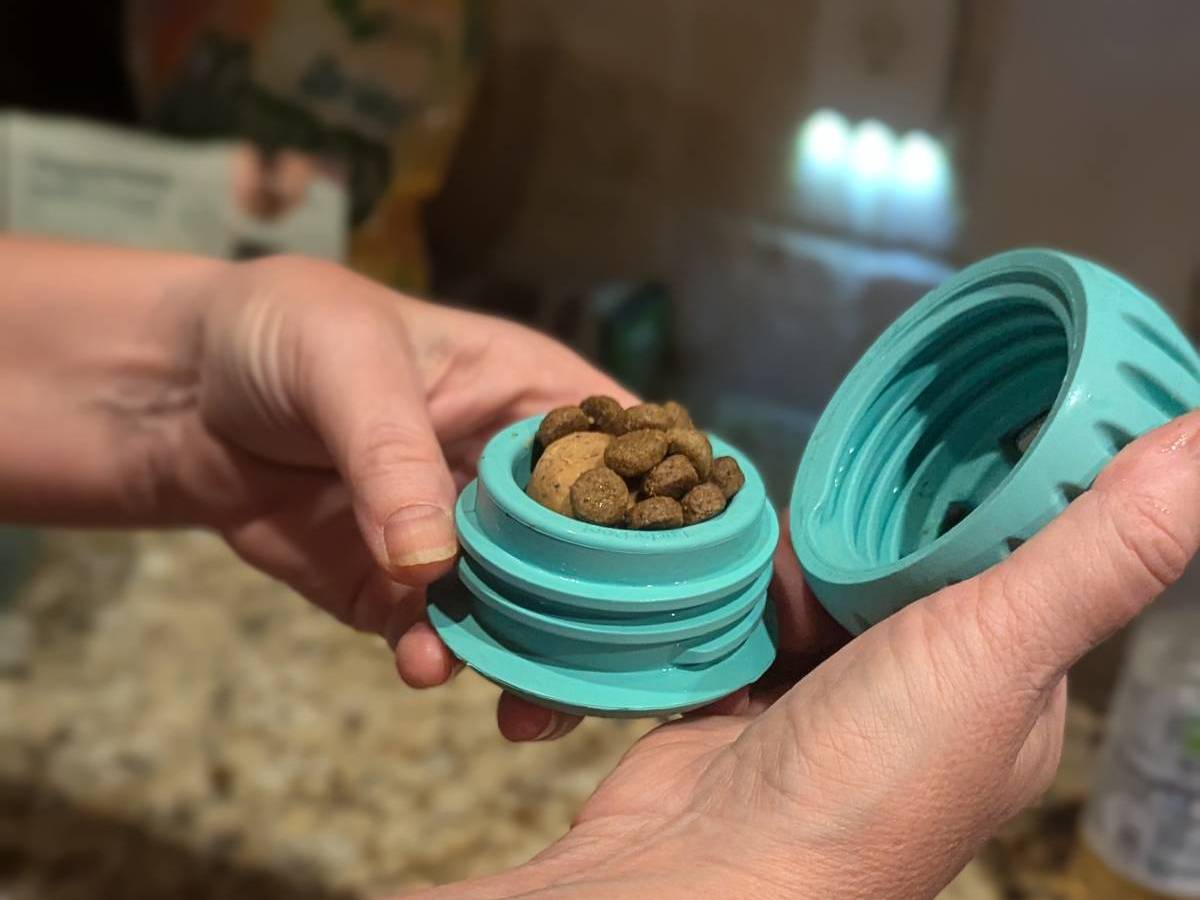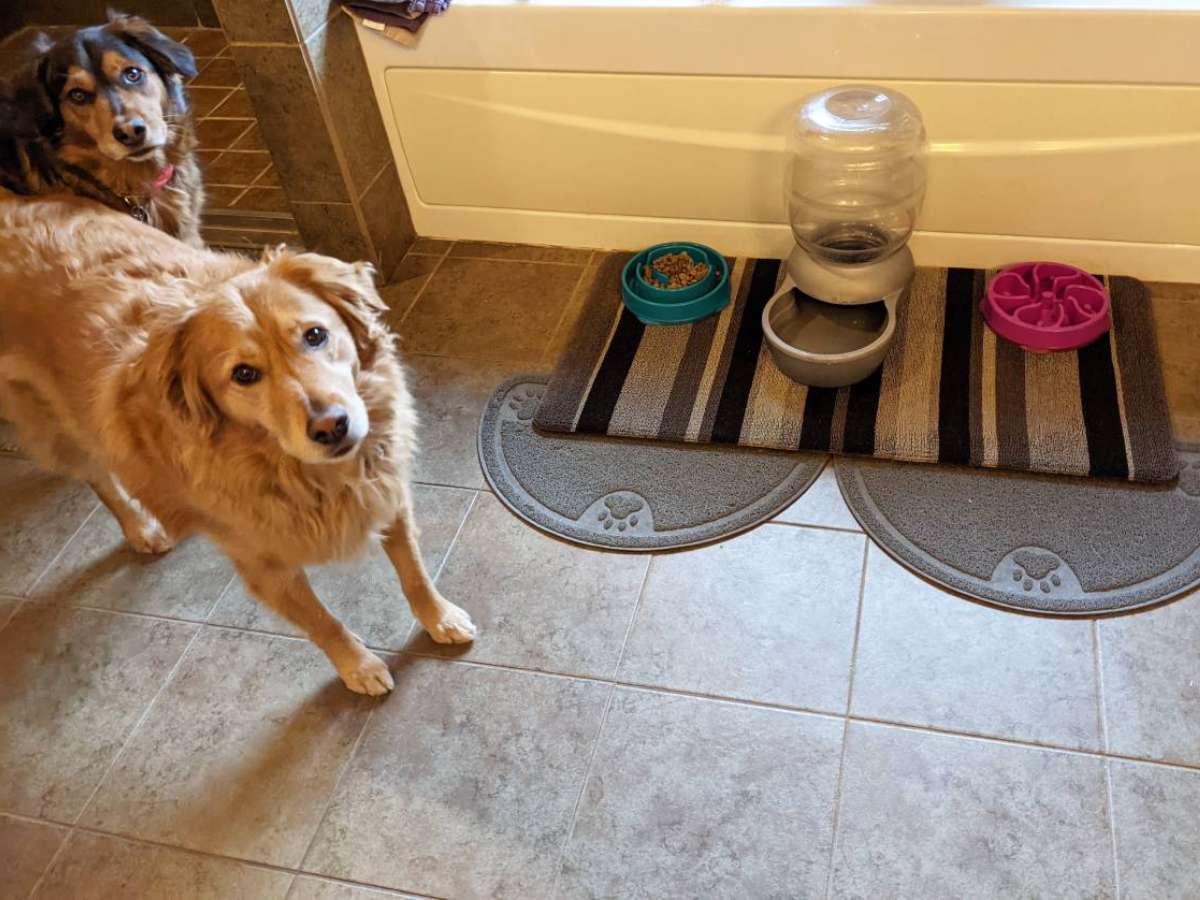 If your dog has dry skin, he’s not alone. This is a very common issue with dogs.
If your dog has dry skin, he’s not alone. This is a very common issue with dogs.
Earlier I shared my all-time favorite home remedy for dog dry skin that our veterinarian recommended.
It worked for us almost immediately, and as you can see from the comments, it has worked for a number of other dog owners as well.
These days, to prevent the dry skin from returning, I continue to sprinkle olive oil on my dog’s food once a month or so.
He thinks it’s a treat to have something moist spilled over his dry kibble. I like how it keeps his coat soft and shiny. So it’s a win-win for both of us.
Looking for other home remedies for your dog’s dry skin?
Here are a few worth considering…
The Best Dog Dry Skin Home Remedies
#1 – Groom your dog.
One session with a professional groomer can work wonders at bringing your dog back to the best he can be coat-wise and looks-wise. Plus, a professional groomer is keenly aware of dog skin issues… and remedies! So it makes sense to get your dog professionally groomed before you try other things.
If you don’t want to pay to have your dog groomed from head to toe, then follow these videos showing how to groom your dog. Pay special attention to how to bathe your dog and how to brush your dog, since those 2 things have the biggest impact on your dog’s dry skin.
Dogs actually have more sensitive skin than humans, and are often exposed to a variety of irritants in their environment. These grooming tips may help alleviate your dog’s constant itching. Brushing your dog daily will remove pollens, grasses, and other outdoor irritants. Source
#2 – Use a dog shampoo.
In some cases, using the wrong shampoo could actually cause dog dry skin. Bathing your dog too often also causes dry skin. Whatever you do, don’t use human shampoo on your dog! Human shampoos are formulated for human pH levels.
The pH scale ranges from 0 to 14, with levels less than 6.4 considered high acidity, and levels more than 6.4 considered high alkalinity. The normal range of skin pH levels for humans is 5.2 to 6.2, which means it tends to be on the acidic side, and shampoos and skin products are formulated specifically to maintain this balance. Now consider the relative pH balance for dogs. Depending on breed, gender, climate, and the anatomical site on the dog, the pH levels range from 5.5 to 7.5, tending toward a more alkaline concentration. Therefore, if a shampoo that is formulated for human skin is used on a dog, the dog’s acid mantle will be disrupted, creating an environment where bacteria, parasites, and viruses can run rampant. Source
If your dog suffers from dry, flaky skin, you should use a dog shampoo with natural moisturizers in it like these dog dry skin shampoos.
But don’t use a human shampoo!
Human shampoos, even the baby variety, are far too drying for a dog’s sensitive skin and have a variety of additives — for example, thickening shampoos or those for color treatments — that are unnecessary and perhaps, harmful to pets. Because dogs bathe much less frequently and get so much dirtier than we do, their shampoos have to work even harder than ours – so dog shampoos have to be even better quality than human ones. Source
#3 – Brush your dog.
The simple act of brushing your dog removes the loose hair and dander that’s accumulating near your dog’s skin (especially if you use a good undercoat brush like the Furminator). By clearing away the irritants that are trapped and hovering around your dog’s skin, you’re letting the skin breathe. (Fresh air is good!) At the same time, you’re also stimulating the release of your dog’s natural skin oils — which will make his coat healthier and shinier over time.
Similar to dry skin brushing for humans, brushing your dog counteracts the dryness and — with enough repetition — helps to eliminate your dog’s itchy skin.
Who knew that something so simple and basic as brushing your dog’s coat could help to control and eliminate itchy and irritated skin. When his skin is itchy, inflammatory blood cells and chemical compounds such as histamine and prostaglandins accumulate in the affected area. These are all responsible for the reddening and inflammation that causes the itch. Source
#4 – Change your dog’s diet.
Your best bet is to try a 100% natural dog food. (Don’t trust the name alone; check the list of ingredients to be sure.) While better dog foods tend to cost more than the most popular store brands, they’re much better quality. And since they have no fillers and preservatives, your dog actually needs less of it in order to feel full.
Some dog owners have had great luck by switching to a vegetarian dog food diet or even a raw food diet (like the BARF diet). Whichever dog food you choose to feed your dog, the idea is to find one that has the right amount of essential fatty acids. (See how much and which ingredients are best for dogs.)
If Fido has dry skin the most common problem is the food he’s eating. Don’t start him on supplements and other expensive products that are unlikely to help and will only support Big Pharma!! They don’t care a lick about your Fido. If the problem is food related (as opposed to a medical condition) a good brand of holistic food will be all you need. Change his food, change his skin, it’s that simple. Source




